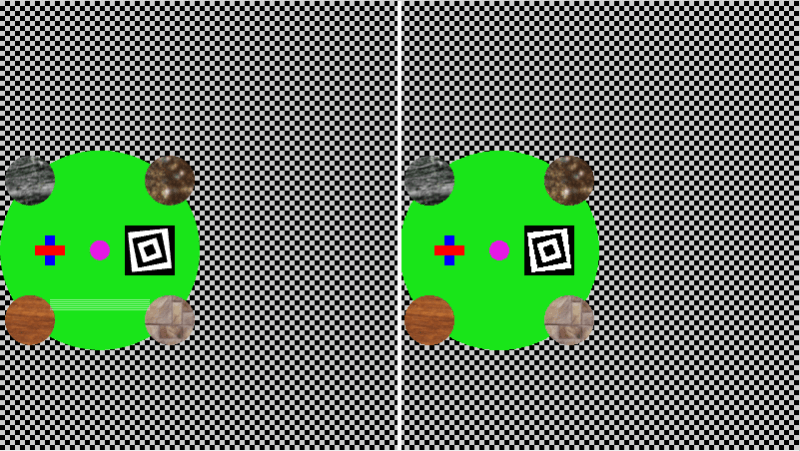The last post was about quincunx antialiasing which used 5 samples per pixel, but allowed you to share 4 of those samples with 4 other pixels each, making it so you only had to render 2 samples per pixel to get those 5 samples per pixel.
I also mentioned that shadertoy didn’t allow you to render to texture so in my shadertoy demo, i had to actually just do 5 samples per pixel to be able to show you the quincunx effect.
If you ever find yourself in that sort of a situation where you can’t (or don’t want) to render your scene twice, 4-Rook Antialiasing may be more what you are looking for.
4-Rook anti aliasing takes 4 samples per pixel, and does so in the pattern below with the specified blend weights. This pattern is also sometimes called rotated grid supersampling (RGSS) and is also a subset of “N-Rook” supersampling where your sample points within a pixel don’t share a vertical or horizontal line with any other sample point. The N-Rook sample patterns are good at breaking up horizontal or vertical aliasing.

Interestingly, 4-Rook AA looks less blurry than quincunx so is higher quality. Intuitively, I’d have to say that makes sense, especially since it is more expensive to do (you render 4 samples per pixel instead of 2!), and also, while quincunx technically has 5 samples per pixel, and 4-Rook only has 4, those 4 samples are all NEW information used only once, while 4 of the samples in quincunx are “old news” and just the old information repeated again.
I think of it like this… the difference between a blur and real SSAA is that in a blur, you try to improve the image with no added information, while in SSAA you try to improve the image WITH added information. Quincunx is on the spectrum between those two since it re-uses 4 samples (minimal “new information”), while 4-rook’s samples are all new information.
Note that you could implement this anti aliasing by rendering your scene 4 times, each time offset by one of the 4 offsets. You would then do a final full screen pass to average each pixel across all 4 renders. In other words: Output[x][y] = (A[X][Y] + B[X][Y] + C[X][Y] + D[X][Y])/4.
Click the image below to be taken to the shadertoy demo of 4-rook anti aliasing.
Here is the quincunx image again for reference, note how it looks blurier in comparison to the 4-Rook image above (check out the red/blue rectangles to see that best), and that the spiral squares don’t quite look as good (they look more aliased?) and that the background grid is ever so slightly darker than the 4-rook version above (or the aliased version of the grid in either picture)!


